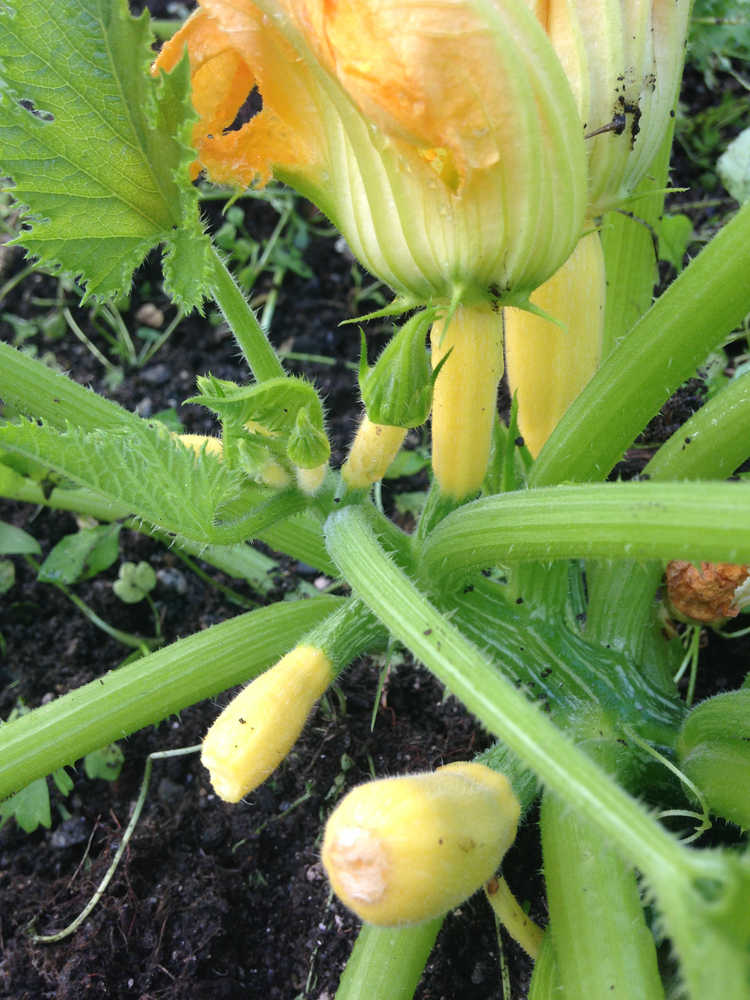A few weeks back I helped out with the Master Gardener tour. In between visitors, I had the chance to ask Sandy Williams a few questions. I’m not sure if his delight at seeing people arrive was due to the tour being successful or if he was just glad I stopped asking questions. I couldn’t resist; there’s always something to learn from Sandy and his wife, Suzanne. Both are masters.
One of my questions had to do with squash and zucchini blossoms. Sandy says he pinches them off when he can begin to see the fruit. He said mold will enter the flower and then travel to the squash. Pinching the flower off helps protect the zucchini. He said it’s different for hanging baskets because you’re able to water them from the bottom, which reduces the mold issues.
My zucchini is starting to flower and I can see fruits on my yellow squash. Zucchini and crook necked yellow squash are heavy feeders and do better when given additional nutrients each week. Suzanne said she fertilizes the plants in their garden every month with an 8:32:16 Alaska fertilizer mix, whereas Sandy uses an 18:18:21 liquid fertilizer for the fruiting plants such as zucchini, cucumbers and tomatoes.
Once you begin getting zucchini or squash, keep picking them as it will encourage new growth. Ideally, you’d pick them when they are six to eight inches long.
The one plant that doesn’t need fertilizer is potatoes. They grow well in poor soil. It’s important to remember that new potatoes grow on top of the seed potato. You’ll need to add soil so that it buries the plant, just leaving the growing tip above the dirt. This creates enough growing room for your new potatoes.
The garlic in my plot sent out a shoot up the middle. This is a smooth, round stem called a scape. You’ll want to cut this off where it meets the rest of the plant to channel the nutrients into growing a bigger bulb, rather than flowering and seeding.
I tend to harvest the scapes a few at a time, which allows me to use them when they’re fresh. However, if you leave them on too long the stem becomes woody instead of succulent. I’ve also harvested my onion and shallot flower stem. They are sitting in a pitcher on my table and I’ve been using them in place of onions when I cook.
This is also the time I begin to thin root vegetables, keeping at least a half an inch between plants. The beet seed is actually a fruit embryo. This means when you plant a seed, you’ll end up with several offshoots. Thin out the less hardy plants, giving the remaining root vegetables room to grow and develop.
Now that we’ve settled into a calmer period of gardening, take advantage of this time to walk around and look at other people’s gardens. See what is working in theirs and if someone is there, ask questions. But as Sandy might tell you, don’t ask too many.
• Corinne Conlon is a freelance writer based out of Juneau. She can be reached at dirtgirlgardening@gmail.com.

